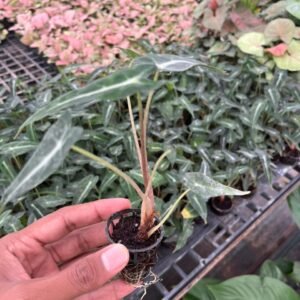The Shevanti plant, commonly known as Chrysanthemum, is a vibrant and cherished flowering plant celebrated for its beautiful blooms and rich cultural significance. The term “Shevanti” is often used in India, where these flowers hold a special place in gardens, homes, and festivities.
Appearance and Unique Features
Shevanti plants are characterized by their striking flowers, which come in a variety of colors including yellow, white, pink, red, and purple. The blooms can be large and daisy-like or small and button-shaped, depending on the variety. The lush green foliage complements the vibrant flowers, creating a stunning visual display.
Chrysanthemums typically bloom in late summer to fall, offering a burst of color during a time when many other plants are fading. Their sturdy stems and bushy growth habit make them suitable for borders, garden beds, and container arrangements.
Care and Maintenance
Caring for Shevanti plants is relatively straightforward, making them a favorite among both novice and experienced gardeners. Here are some essential care tips:
- Light: Shevanti plants thrive in full sun, requiring at least 6 hours of direct sunlight each day. Providing ample light helps promote robust growth and abundant blooms.
- Watering: These plants prefer evenly moist soil, especially during the growing season. Water them regularly, ensuring that the top inch of soil dries out slightly between waterings. Avoid waterlogging, which can lead to root rot.
- Soil: Well-draining soil enriched with organic matter is ideal for Shevanti plants. A balanced potting mix works well, providing the necessary nutrients for healthy growth.
- Fertilizing: During the growing season, a balanced fertilizer can be applied every few weeks to support flowering. However, avoid over-fertilizing, as this can lead to lush foliage with fewer blooms.
Versatility in Decor
Shevanti plants are incredibly versatile and can be used in a variety of settings. They make stunning additions to garden beds, borders, and containers, and their vibrant blooms are perfect for floral arrangements and bouquets. In many cultures, Chrysanthemums are used in festive decorations and religious ceremonies, symbolizing joy and beauty.
Seasonal Interest
The Shevanti plant typically blooms in the late summer and fall, providing a burst of color when many other flowers are beginning to fade. The flowers are known for their long-lasting qualities, often remaining vibrant for several weeks, making them a favorite for autumn displays and celebrations.
Propagation and Growth
Shevanti plants can be propagated through stem cuttings or division. Taking cuttings from healthy plants and rooting them in soil can lead to new growth. Additionally, dividing established clumps every few years can rejuvenate the plants and encourage vigorous blooming.
Symbolism and Cultural Significance
In various cultures, Chrysanthemums symbolize joy, optimism, and longevity. In countries like Japan, they are revered and associated with nobility and perfection. In India, Shevanti flowers are often used in festivals and rituals, symbolizing happiness and prosperity.






Reviews
There are no reviews yet.